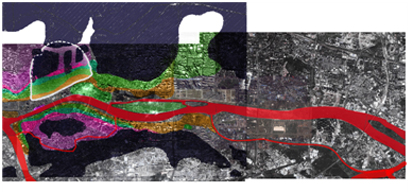
Visualizing and Understanding Guangzhou City, an Historic City in Rapid Transformation
Abstract
The article proposes a research and pedagogical project in the city of Guangzhou in China with the usage of the digital tools of visualization. We would like to carry out a model which could help to understand the urban transformation by structuring the geographical, political, economic and social conditions together. By taking concrete sites and focusing on a relatively short period, the article aims to structure a research method and imagine new forms and uses of the city representation. The transformation process of European historic cities such as Venice is relatively slow. When the research object concerns a historic city that has undergone radical changes in a short time, such as the case of Guangzhou (China), it is interesting to carry out analyzes at a "micro-scale" and within a “micro-timeline”. The project is proposed for understanding how the modern city works differently than the old traditional city and how the contemporary conditions influence urban transformation. On one hand, we want to know how the modern city is struggling to overcome the geographical constraint. For this the Pearl River and the canals are the essential points of observation. On the other hand, we want to understand the ternary composition of the government-public-company, that represents a complex social relationship in contemporary China, which is unparalleled in the Western world, and its influence toward the production of urban space.
Keywords
Full Text:
PDFRefbacks
- There are currently no refbacks.
Copyright (c) 2018 Xiaoli Wei, Zhuangzhuang Wu, Yao Cheng, Jing Yan, Ning Wang
DISEGNARECON
ISSN 1828 5961
Registration at L'Aquila Law Court no 3/15 on 29th June, 2015.
Indexed in SCOPUS. Diamond Open Access. All papers are subjected to double blind peer review process by qualified reviewers.
Journal founded by Roberto Mingucci
